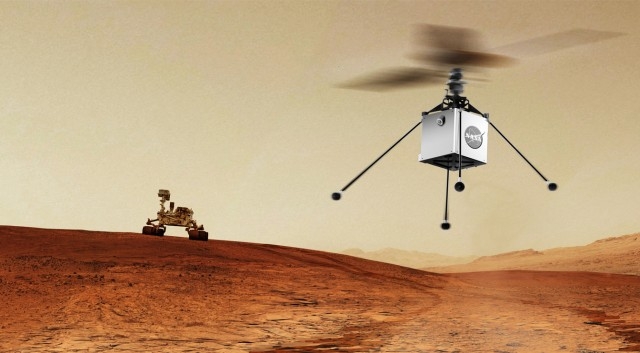
Artist’s conception of the autonomous, drone-like Mars Helicopter, which will be sent to Mars along with the 2020 rover. Image Credit: NASA/JPL-Caltech
Excitement has been building for NASA’s next rover mission to Mars, scheduled to launch sometime in 2020. Although it looks a lot like the current Curiosity rover, its mission will be to search directly for possible evidence of past life. Curiosity, on the other hand, is studying the ancient habitability of Gale crater, which we now know used to hold a lake or series of lakes, focusing more on geology than biology. And now the upcoming 2020 mission just got even better – NASA has approved the inclusion of a tiny drone-like helicopter to accompany the rover!
This is something never done before, and assuming it’s successful, will be the first time that Mars has been robotically explored by something other than an orbiter, lander or rover.
The Mars Helicopter will be a small, drone-like autonomous rotorcraft, designed specifically for Mars’ very thin atmosphere; it will provide a unique and exciting new way to see the Martian landscape as never before – a bird’s-eye view, if you will. And of course, it’s just very cool.




